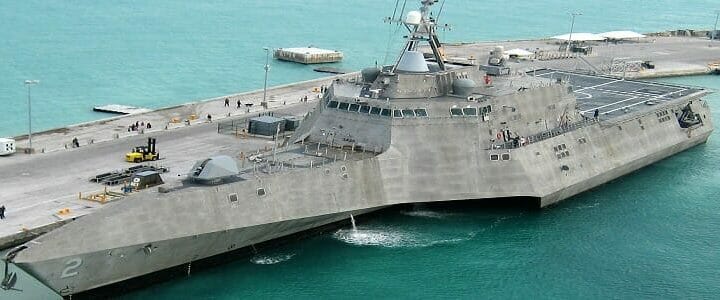Spreading disinformation on Facebook and Twitter is by far the least destructive thing the Russians have been up to lately. There’s the dangerous GPS jamming in both the Black Sea and the Baltic Sea. There’s the numerous high-speed intercepts of U.S. and NATO ships and aircraft. Last month, Russian bombers flew close to Great Britain and were met by intercepts from the Royal Air Force when they refused to respond to calls from air traffic controllers.
And of course, there’s the 2014 annexation of Ukraine’s Crimean Peninsula. “Little Green Men,” irregular soldiers with no visible markings on their uniforms, infiltrated Crimea, seizing strategic locations and proclaiming an independent republic. That “republic” then voted to join the Russian Federation, expelling those Ukrainian military forces that remained loyal to the government.
The Crimean crisis and the subsequent Russian-supported insurgency in eastern Ukraine has continued to present problems for the rest of the world. On Sunday, Russia turned-up the heat, seizing three Ukrainian naval vessels seeking to break a Russian blockade of the Kerch Strait, the narrow waters that separate the Sea of Azov from the larger Black Sea to the south.
Dispute over access to the Sea of Azov
Despite the insurgency, Donbass is still Ukrainian territory, and a 2003 treaty ensures that Russia and Ukraine share both the sea and the strait. It now seems that Russia’s seizure of Crimea has changed the calculus. Earlier this year, the Russians opened a bridge connecting Crimea to Russia proper, further restricting traffic through the passage. They also began “inspecting” vessels transiting the Kerch Strait.
In August, State Department spokesperson Heather Nauert addressed Russia’s actions. She said the U.S. “condemns Russia’s harassment of international shipping,” and that “Russia’s actions to impede maritime transit are further examples of its ongoing campaign to undermine and destabilize Ukraine, as well as its disregard for international norms.”
On Sunday, as the situation was escalating, they blocked that bridge’s main span with a civilian tanker, closing it to all traffic, civilian and military. Later in the day, Russian fighter aircraft were filmed patrolling the area. Other online video shows a Russian vessel ramming a Ukrainian tugboat during the seizure.
Bullies strike weakness to mask their own
The Russian Navy needed an easy win. It is still smarting from the loss of its only aircraft carrier, the Admiral Kuznetsov, at the hands of a floating dry dock crane. The accident damaged the carrier and sank the dry dock. The incident was an embarrassment for the Russian Navy… not that the ship was known for striking fear into hearts like an aircraft carrier should. It is better known for belching black smoke than for projecting Russian power. (Unlike U.S. aircraft carriers, the Kuznetsov is not nuclear powered). The U.S. Navy once shadowed the ship, not to gather intelligence, but “in case it sank.”
So the Russian Navy was looking for a win, and decided to seize the Ukrainian boats as they exited the strait and entered the Black Sea. Its actions injured two Ukrainian sailors in the process.
This blockade is a blatant violation of Ukraine’s freedom of navigation, and yet Russian Foreign Ministry spokeswoman Maria Zakharova caused Ukraine of “gangster tactics” or “bandit methods” depending on whose translation you read. Talk about blaming the victim. This is little different from China building an artificial island in international waters then accusing the U.S. of violating its territorial waters when U.S. Navy vessels conduct freedom of navigation operations.
The U.S. government has not formally responded as of Sunday evening in Washington. But Russian and American leaders are set to meet in Argentina at this week’s G20 summit. Expect this provocation to be on the agenda at some point.




